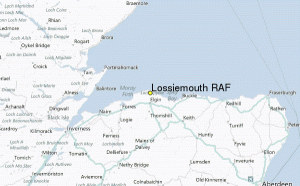2017-02-25 Second Line of Defense has visited several RAF bases over the past few years.
Last year, we produced a report on one of those bases, RAF Lossiemouth, which is to receive P-8s as well as to operate Typhoons.
New operational capabilities will require significant upgrades to the base to execute their missions.
And the recent visit to Norway has highlighted the importance for Norwegian defense for these upgrades as well to support the build out of 21st century operational capabilities as well.
According to a story published by the UK Ministry of Defence on February 24, 2017, these investments are in process.
Sir Michael Fallon outlined how Scotland will be home to several additional key Defence capabilities by 2020 to the Board and recognised its unique contribution to UK national security.
Defence Secretary Sir Michael Fallon said:
“Scotland is on the frontline of defending the United Kingdom from growing threats at sea, in the air, and on land.
“Our commitment to the future of defence in Scotland is underlined by increasing investment in better infrastructure for the Armed Forces helping to keep us safe.

Scotland’s 14,000 military regular and reserve personnel and 3,930 MOD civilians are set to benefit from:
- £1.3 billion investment into upgrades to HM Naval Base Clyde’s waterfront, engineering support, accommodation and physical security ahead of the Dreadnought class of deterrent submarines arriving in Scotland from the early 2030s;
- £400 million investment at Lossiemouth as one of the RAF’s three fast jet bases – upgrading its runways, taxiways and accommodation for the nine new Poseidon P-8 Maritime Patrol Aircraft and an additional Typhoon squadron;
- Being home to a versatile Army Adaptive Force Brigade, which specialises in operations, works alongside partner nations abroad, and provides resilience support to Scottish civil authorities and communities. Further, Leuchars Station will be expanded to become the main ‘hub’ for Army activity in Scotland.
The £178 billion Defence equipment programme supports 11,000 Scottish industry jobs and accounts for over 10% of the country’s industrial base.
Scottish business is developing key military capabilities: the Queen Elizabeth Carriers being built in Rosyth; Offshore Patrol Vessels and Type 26 Global Combat Ships being built in Govan and Scotstoun; a new Active Electronically Scanned Array Radar for RAF Typhoons being built in Edinburgh.
We discussed some of these issues in our Special Report on RAF Lossiemouth.
The Royal Air Force is in transition as the Tornado is retired, the Typhoon is modernized and the P-8 and F-35 are introduced.
Infrastructure of key bases is being modernized as well.
This transition as seen by officers involved in the operation and support of combat aircraft at RAF Lossiemouth is presented in this report.
In effect, Lossie will train to support the formation and evolution of a 21st century combat force in which a multi-mission combat fleet of Typhoons will work with the maritime-focused but land-based capable maritime combat system which is the P-8 (which will be based at RAF Lossiemouth), and which, in turn, will work with the multi-tasking flying combat system which is the F-35 which will be based at RAF Marham.
It is clear that the base is well positioned to support the evolving dynamics of defense, not only for the UK homeland, but to provide a solid anchor within the defense system for the North Atlantic.
We start with the first interview with Group Captain Paul Godfrey, the base commander with regard to his perspective concerning the evolution of the base in preparing for the RAF airpower transition.
We will then present interviews, which look at the coming retirement of the Tornado, its legacy and its contribution to the transition as well.
We will then look at the Typhoon and its key role for the RAF, in Quick Reaction Alerts, Operation Shader and in the Baltic Air Patrol.
Insights are provided by interviews with the 1 (F) Squadron, 2 (AC) Squadron, and those charged with the responsibility of maintaining and supporting the Typhoon fleet at Lossie and in its expeditionary operations, which include deployments to the Falklands as well.
Next is an interview with an officer involved in keeping the skill sets alive while waiting for the P-8, which highlights how the RAF is handling a very difficult transition, namely, the retirement of the Nimrod PRIOR to receiving a replacement aircraft.
The final RAF Lossiemouth interview is one a second interview with Group Captain Paul Godfrey, who highlighted the challenges and opportunities of shaping RAF transformation as seen from a key operating base for the RAF.

